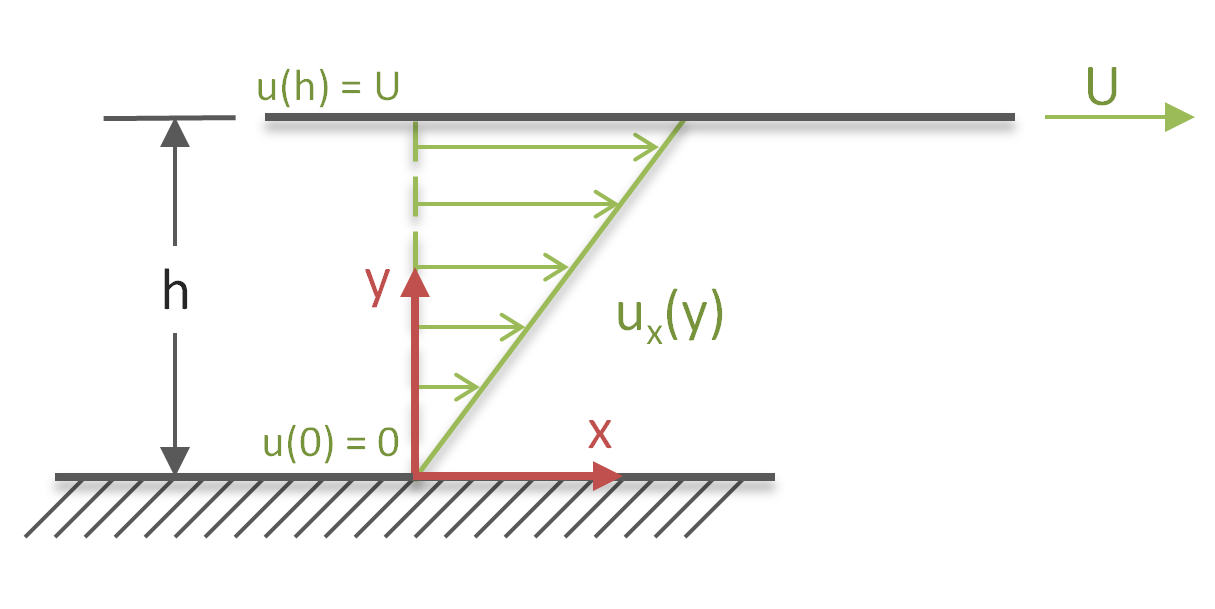Flow Properties of Polymers
Newtonian Fluids
Rheological measurements provide important information about the flow and creep properties of polymeric materials. This information might aid in optimizing the processing conditions and the composition of plastics. Rheological measurements are also helpful to understand the effect of aging on the viscoelastic properties and to assess the damage caused by heat, oxygen etc. on the structure of the polymers.
Viscosity is a measure of internal friction in a fluid. Or to be more specific, it is the resistance to shear flow, where adjacent layers move parallel to each other with different speeds. It can be defined through the idealized situation known as a Couette flow, where a layer of fluid is trapped between two horizontal infinite large plates, one fixed and one moving horizontally at constant speed u.

If the speed of the top plate is small enough, the molecules in the fluid will move parallel to it, and their speed will vary linearly from zero at the bottom plate to u at the top plate at a distance y. The ratio u / y is called the shear velocity or shear rate, and is equal to the derivative of the fluid speed in the direction perpendicular to the plates du/dy. According to Newton, the shearing forces F per surface area A (surface of the upper plate) can be expressed by a differential equation. A perfect Newtonian liquid obeys following simple equation

μ is called the Newtonian viscosity coefficient and γ is the shear strain. Its time dependence is equal to the velocity gradient:

μ is called the dynamic or absolute viscosity and when divided by the fluid density, ν = τ / ρ, the kinematic viscosity.
In the case of a Newtonian fluid, the viscosity μ is independent of the shear strain rate. However, this is not the case for polymer melts. One usually observes a strong dependence on shear rate, that is, polymer melts are non-Newtonian liquids. The three major classes of flow behavior are
Time-independent Fluids: the shear rate in a function of the shear stress only. (The simplest example of a fluid of this class is a Newtonian fluid).
Time-dependent Fluids: the shear rate is not only a function of shear stress but also a function of the shear history.
-
Elasticoviscous Fluids: These systemes are predominantly viscous but also exhibit partial elastic recovery after deformation.